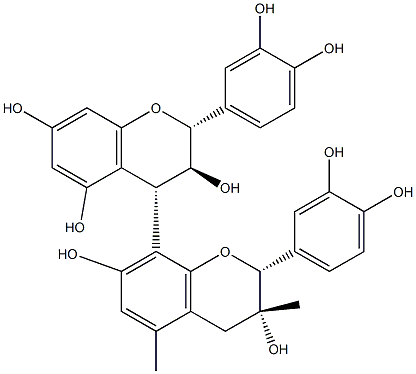Quillaja saponaria, ext.
- CAS NO.:68990-67-0
- Molecular Weight: 0
- EINECS: 273-620-4
- Update Date: 2024-12-18 14:15:32
What is Quillaja saponaria, ext.?
Chemical properties
Quillaja is a slender, upright evergreen perennial tree growing to 30 to 45 ft tall with pendulous branchlets. The brightgreen, oval leaves have slightly toothed margins. Cream-white, star-shaped flowers appear at the ends of the branchlets during May and June and somewhat into summer. The fruit is a rosette of five leathery lobes that matures in fall. It has white flowers clustered in cymose inflorescences and numerous winged seeds. The generic name is derived from the Chilean word quillean, meaning to wash, from the use made of the bark. The part used is the bark. Quillaja has a bittersweet, aromatic flavor.
Definition
Extractives and their physically modified derivatives such as tinctures, concretes, absolutes, essential oils, oleoresins, terpenes, terpene-free fractions, distillates, residues, etc., obtained from Quillaja saponaria, Rosaceae.
Composition
The active principles contained in the bark are two saponins—quillaja saponin and quillaic acid, or quillaja sapogenin. Small amounts of saccharose, starches, calcium oxalate, vitamin C and a few other unidentified components are also present (Burdock, 1997). Quillaia contains about 10% saponins, which primarily include glycosids of quillaic acid. A saponin called QS-21 has been used as an adjuvant.* The bark also contains tannin. Eight new triterpenoid saponins were isolated from a bark extract of Q. saponaria Molina. The saponins were characterized as phytolaccagenic acid, 22-β-hydroxy-quillaic acid, and echinocystic acid substituted with different oligosaccharides at C-3 and C-28. The O-4 of the fucosyl residue in the 28-O-oligosaccharide was substituted with either acetyl, (S)-2-methylbutanoyl, or (3S,4S)-3-hydroxy-4-methylhexanoyl groups.
Flammability and Explosibility
Non flammable
Properties of Quillaja saponaria, ext.
| Boiling point: | 101.9℃[at 101 325 Pa] |
| Density | 1.218[at 20℃] |
| vapor pressure | 0.009Pa at 105℃ |
| FEMA | 2973 | QUILLAIA (QUILLAJA SAPONARIA MOLINA) |
| form | neat |
| Water Solubility | 2000g/L at 19.5℃ |
| EPA Substance Registry System | Quillaja saponaria, ext. (68990-67-0) |
Safety information for Quillaja saponaria, ext.
Computed Descriptors for Quillaja saponaria, ext.
New Products
(S)-3-Aminobutanenitrile hydrochloride 4-Methylphenylacetic acid N-Boc-D-alaninol N-BOC-D/L-ALANINOL Tert-butyl bis(2-chloroethyl)carbamate 3-Morpholino-1-(4-nitrophenyl)-5,6-dihydropyridin- 2(1H)-one Furan-2,5-Dicarboxylic Acid Tropic acid 1-Bromo-3,5-Di-Tert-Butylbenzene S-2-CHLORO PROPIONIC ACID ETHYL ISOCYANOACETATE 2-Bromo-1,3-Bis(Dimethylamino)Trimethinium Hexafluorophosphate 4-IODO BENZOIC ACID 3-NITRO-2-METHYL ANILINE 1-(2,4-DICHLOROPHENYL) ETHANAMINE (2-Hydroxyphenyl)acetonitrile 4-Bromopyrazole 2-(Cyanocyclohexyl)acetic acid 4-methoxy-3,5-dinitropyridine 1-(4-(aminomethyl)benzyl)urea hydrochloride 2-aminopropyl benzoate hydrochloride diethyl 2-(2-((tertbutoxycarbonyl)amino) ethyl)malonate tert-butyl 4- (ureidomethyl)benzylcarbamate Ethyl-2-chloro((4-methoxyphenyl)hydrazono)acetateRelated products of tetrahydrofuran








You may like
-
 2033-24-1 98%View Details
2033-24-1 98%View Details
2033-24-1 -
 42831-50-5 5-METHYLISOXAZOLE-4-CARBOXYLIC ACID 98%View Details
42831-50-5 5-METHYLISOXAZOLE-4-CARBOXYLIC ACID 98%View Details
42831-50-5 -
 1975-50-4 98%View Details
1975-50-4 98%View Details
1975-50-4 -
 2-HYDROXY BENZYL ALCOHOL 98%View Details
2-HYDROXY BENZYL ALCOHOL 98%View Details
90-01-7 -
 2-Chloro-1,3-Bis(Dimethylamino)Trimethinium Hexafluorophosphate 221615-75-4 98%View Details
2-Chloro-1,3-Bis(Dimethylamino)Trimethinium Hexafluorophosphate 221615-75-4 98%View Details
221615-75-4 -
 61397-56-6 CIS BROMO BENZOATE 98%View Details
61397-56-6 CIS BROMO BENZOATE 98%View Details
61397-56-6 -
 14714-50-2 (2-Hydroxyphenyl)acetonitrile 98+View Details
14714-50-2 (2-Hydroxyphenyl)acetonitrile 98+View Details
14714-50-2 -
 118753-70-1 98+View Details
118753-70-1 98+View Details
118753-70-1